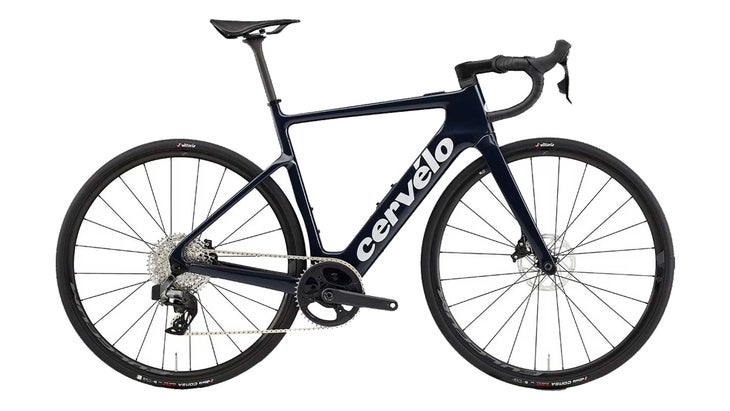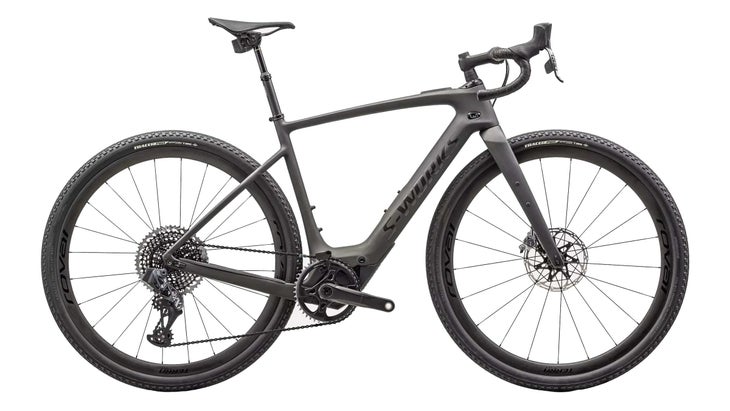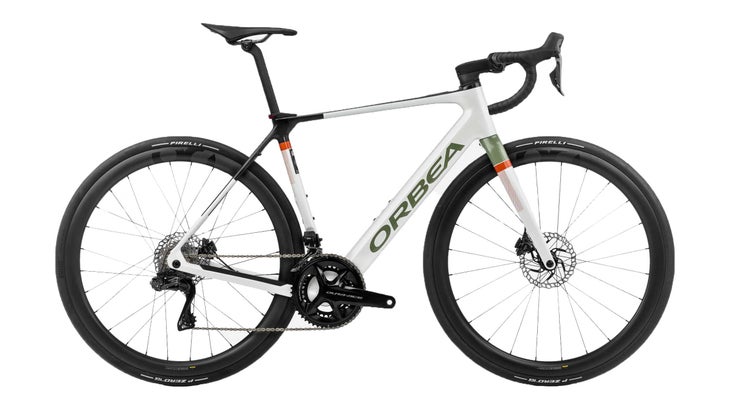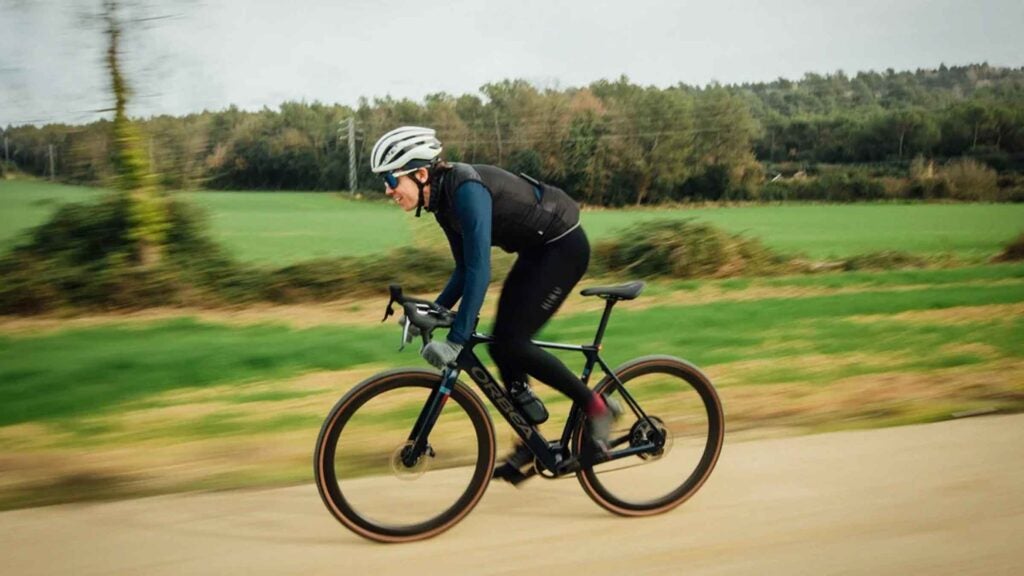No products in the cart.
Outdoor Adventure
The Best E-Bikes for Road and Gravel Riding (2024)
What makes for a great road and gravel e-bike? The formula is simple: familiar handling, comfortable positioning, and the right amount of assistance to make the rider feel connected to the bike. How a bike approaches that formula is very different, however.
These bikes have come a long way over the past few years. The best e-bikes are hard to distinguish from a non-assisted road or gravel bike at first glance, with motors tucked away in the hub of the rear wheel and slim batteries housed in the down tube. Not only do they help you ride farther, but they also look phenomenal, too.
Our list of the best road and gravel e-bikes of 2024 comes from a wide array of bike testing over the last year, including bikes from top bike brands down to the small builders. How else are you going to find the right bike for you if not for us to obsess over it?
Be sure to check out our guides to the best enduro bikes and our many other bike guides.
At a Glance
All gear in this guide was tested by multiple reviewers. When you buy through our links, we may earn an affiliate commission. This supports our mission to get more people active and outside. Learn more.

Editor’s Choice
Cervélo Rouvida
$7,500 at Backcountry $7,500 at Competitive Cyclist
Build: Rival XPLR AXS 1 Road
Weight: 33.7 lbs (small)
Pros and Cons
⊕ Premium features and very fast
⊕ The app is extremely intuitive
⊗ The Fazua Ride 60 motor isn’t as powerful as a Bosch or Shimano motor
Believe it or not, Cervélo now has an e-bike. It turns out that having some electric assist in your bike ride is fun. Who knew? Thankfully, Cervélo is here with the Rouvida, an e-bike that can be set up both as a road bike and a gravel bike based on your needs. And better still, the brand sweat the details to ensure it feels like a Cervélo every step of the way.
The Rouvida has a Fazua Ride 60 motor that offers 60 Nm in torque, which we found to be exceptionally smooth and fast. Its Class 3 classification (with assist up to 28 miles per hour) means assist doesn’t cut out during typical group ride speeds, though that 60 Nm torque isn’t quite as powerful as what you’d find from Bosch or Shimano. Assist is controlled by a top tube-mounted controller that shows the different assist levels. Its USB port doubles up to charge accessories or lights if you prefer.
Even though this is an e-road or e-gravel bike, Cervélo’s high-end features are still here. The pair of flip chips to optimize the bike for road tires or gravel tires, and the 430 Wh battery resulted and quick handling that had us thoroughly enjoying the ride. In our testing, we got roughly 35 miles of range out of the bike, though that was solely when riding the Rouvida at its highest assist setting. Be a bit more cautious with your assist and you can expect closer to 50 miles.
The Rouvida’s drive system largely succeeds in feeling like a regular bike, just with a friendly bit of help. Some of these lightweight e-bike systems make you feel like you have a tailwind; the Fazua system feels as if you’re riding with a tailwind while hitting the highest power numbers you’ve seen in 15 years.
Like most of these lightweight e-bike systems, power here from the torque and cadence sensors comes from a combination of speed and pedaling cadence. Loafing about results in minimal power, while pedaling at a high RPM results in the motor being more eager to give up all of its assist.
Of course, all of this is adjustable through Fazua’s own app. It’s cleaner than just about any other system I’ve used in recent memory, with graphical charts showing how assist builds as the rider changes their pedaling input. Want the bike to use less energy in the lowest of its three settings? Simply slide the graph left and right to adjust how quickly the power comes on, and down to change its max power input.
The Cervélo Rouvida has four models: two built for gravel, and two built for road. All feature the same carbon frame and fork, with a choice of drivetrains from Shimano and SRAM.

Best for both Road and Gravel Riding
Specialized S-Works Turbo Creo 2
Build: Turbo Creo 2
Pros and Cons
⊕ Extremely seamless assist transition
⊕ Versatile for both road and gravel riding
⊗ Very pricey
Most e-road and e-gravel bikes have a bit of a delay after you start pedaling to when you feel the assist kick in. However, we didn’t need to pedal far on the Specialized Creo 2 to recognize that it almost perfectly blends e-bike assistance with drop bar cycling. That is until you hit the next hill, at which the assistance helps maintain a power output few can dream of.
The second generation Creo 2 features a fully redesigned frame with updated geometry, and uses Specialized’s new SL 1.2 motor system. While the original Creo came in a road and gravel build, the new Creo 2 leans heavily toward gravel. However, on the road, the large tires and gearing combined with the assistance is very good. Overall, the specs might make this bike look more gravel, but the new 29 x 2.20-inch tire clearance ad the Future Shock 3.0 make it perfect for road imperfections, abrupt transitions between different surfaces, and anything we encountered on a paved or unpaved road.
All Specialized Creo 2 models use 1x drivetrains only, but that’s no bad thing. With three different drivetrain options—all using SRAM’s AXS wireless electronic shifting—it’s rare you’ll run out of gears. There’s more than enough power too, at 50 Nm, that can pair with the bike’s 320 Wh battery and 160 Wh range extender.

Most Customizeable E-Bike
Orbea Gain
Build: M10i
Pros and Cons
⊕ Smooth assistance
⊕ Customizable
⊗ Motor isn’t very light at 1,399 grams
Orbea launched the first generation of its Gain e-road bike back in 2019, and now, just four years later, the Basque brand is launching its third generation of the platform. Things are obviously evolving quickly in the e-bike world, but they also seem to be settling down a bit, and what Orbea has arrived at this time around may be a surprise.
Contrary to the other bikes on the list, the Gain is based around a lightweight hub-driven motor from Mahle. The Mahle X20 offers exceptionally smooth assistance to its 20 mph assistance cutoff. And even there, the bike is so smooth that you almost don’t notice that cutoff after you exceeds those speeds. At that point, we were o focused on the bike’s confident handling, the surprisingly good comfort, and its sleek looks. But when we looked down at the top tube, noticed the small e-assist display just behind the stem, and we were reminded that we had some extra electric assist on tap.
Orbea’s ace in the hole isn’t just that the Gain is a plain good bike, the customization options are the cherry on top. Their MyO custom ordering program allows you to choose your gearing, handlebars, and saddles. And certain models get the full experience, with custom paint options available at no extra cost. Component customization start at just $3,199 for an alloy Gain, though you’ll need to spend $5,599 for a carbon frame Orbea Gain with custom paint access.
It can be hard to make your bike truly unique in a sea of same, but the Gain lets you do just that. Few brands if any can compete with that proposition.
How to Choose a Road and Gravel E-Bike
What Is the Difference Between a Road and a Gravel E-Bike?
There a number of differences between a standard, non-assist road bike and a gravel bike. Road bikes are lighter but less comfortable, while gravel bikes are more versatile but not quite as fast on the road. Road and gravel e-bikes though? There are a number of similarities, at least as of now.
The vast majority of e-bikes with drop bars from one company will use the same frame, fork, and motor. In the case of the Cervelo Rouvida above, the difference between the road and gravel bike is how it is built. Road bike builds will receive a 2x drivetrain (with a front derailleur), while gravel bike builds will receive a 1x drivetrain (without a front derailleur). Road e-bikes will have narrower tires and standard road bike handlebars, while gravel e-bikes will have gravel-centric tires and flared drop handlebars.
That said, some road e-bikes and gravel-ebikes are designed specifically for one discipline. Those will follow the same build guidelines as mentioned above, but their handling will be tuned specifically for riding on one specific terrain.
Even still, finding the right road e-bike or gravel e-bike can be a challenge. Here are our tips to ensure you find the right ride.
How Much Do I Need to Spend on a Road or Gravel E-Bike?
Most of the bikes we’ve tested qualify as high-end bikes, costing as much as a decent used car. However, the trickle-down effect is real, and so there are some fantastic gravel bike values at a more affordable price point. Knowing what you can spend will give you a great idea of what’s available to you on the market today.
Budgeting to buy a a road e-bike or a gravel e-bike isn’t just buying a bike of course. Getting the most out of your road bike requires having the right accessories. At a minimum, you’ll need a quality set of bike lights and a well-fitting helmet in the name of safety. Further, you’ll need to budget for a decent set of pedals, and matching shoes if you want to use clip-in style pedals rather than a more accessible flat pedal.
The clothes themselves also make a difference. Finding a properly fitting set of bib shorts and a jersey can make your ride that much more comfortable if you decide to wear them. And that’s just the tip of the iceberg: repair kits, maintenance items, and more are worth budgeting for.
How Do I Choose the Right Size of E-Bike?
Your typical e-bike will come in a range of sizes to fit riders of all heights. Most new e-bikes will come with a size range to help you figure out what size of bike you need. This size range is usually expressed with an XS to XL size range, but some bikes will be measured in centimeters.
Once you figure out what size of e-bike you need, you’ll want to go and give the bike a test ride. That means standing over the top tube of the bike (sometimes referred to as a crossbar) comfortably with both feet flat on the ground. The top tube can touch you, but it’s better if it doesn’t.
The right size of bike will place your torso and arms at roughly a 90-degree angle from your torso without feeling uncomfortable. Your knees will have a slight bend to them at the bottom of your pedal stroke. Most importantly, the bike will feel comfortable to maneuver around.
Of course, all of this advice is only amplified by going to a trusted bike shop. Having another set of eyes to help you find the correct size bike will ensure your money is well-spent. They’ll help you determine the right bike for you based on your riding experience, flexibility, and needs, and they’ll help you determine proper sizing for things like handlebars, saddles, and even your frame.
What Is the Difference Between Electric Bike Systems?
All road and gravel e-bikes consist of the frame, its components, a motor, a battery, and a controller. However, not all electric components on an e-bike are made equally. Here are the differences between e-bike motors and batteries.
Electric road and gravel bike motors and batteries tend to be smaller, sleeker, and lighter than ever before. Batteries are typically tucked away in the downtube, with a range extender sitting where a water bottle might otherwise be placed. While the typical e-bike features a handlebar-mounted controller, most road and gravel e-bikes feature a singular button in the top tube to turn the bike on and off, and no accompanying display.
As a result of all of these systems being paired down, these smaller systems are typically less powerful than what might be found on a typical e-bike. They’re meant to accompany your efforts, rather than outright supplement them.
All road and gravel e-bikes adhere to the popular e-bike class system, which differentiates between the top assisted speeds of different bikes. Most of these bikes are rated as Class 1, offering pedal assist up to 20 miles per hour (32 kph). A growing number of these bikes, however, have motors powerful enough for Class 3 operation, providing pedal assistance up to 28 miles per hours (45 kph).
Many of these e-bikes use a hub-driven electric motor, offering a compact size and a look that is hard to distinguish from a non-electric bike. Mahle is the most common option here.
Other e-bikes will use a mid-drive electric motor, placing the motor where the crankset is. These systems tend to be a bit more powerful than a hub-driven electric motor at the expense of weight and sometimes, drag when the motor is off. Fazua is a popular motor option here, though Shimano, Bosch, TQ, and Yamaha are popular options too.
How We Test
- Number of Testers: 2
- Number of Products Tested: 18
- Longest Testing Bike Ride: 77 miles (123 km)
Bike reviews require a whole bunch of work. These road and gravel e-bikes—ranging from entry-level to top-spec bikes with weights approaching that of a non-assisted bicycle – were chosen to understand which bikes are best on the market today. Sure, we’ve tested bikes from all of the major bike brands, but we’ve also made sure to test the small brands to ensure we find the best gravel bikes.
Our reviews were performed all over the world by five dedicated testers, with a vast majority of those miles on roads and trails we know best. Riding across such varied terrain by riders of different skill levels and needs means we’re well-suited to understanding what parts of a gravel bike can frustrate, what makes a bike good, and what makes a bike truly stand above the competition.
Testing includes riding local loops, big days out, group rides, and everything in between. It means living with them day-to-day, maintaining them, and building them to learn more about their ins and outs.
Meet Our Lead Tester
Alvin Holbrook is a tech editor for Velo. He covers road, gravel, and e-bikes after nearly a decade in the bike industry. In addition, he uses his background in urban planning to cover stories about active transportation, policy, tech, and infrastructure through the Urbanist Update series. He currently lives in San Antonio, Texas with his wife and an ever-growing stable of bikes and kitchen utensils.
Source link

